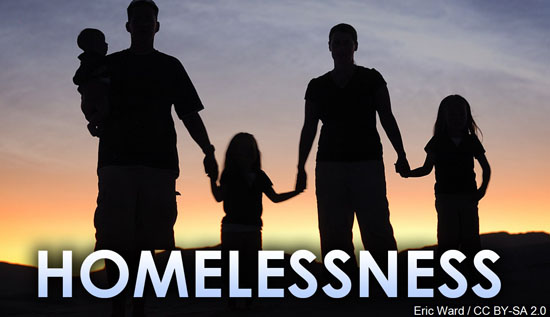Homeless count done in 6 area counties
VW independent/submitted information
An annual count of homeless people in six northwest Ohio counties showed that Van Wert County still has a significant problem when it comes to county residents without a permanent residence.
 The Northwest Ohio Housing Coalition participated in a statewide “Point in Time Homeless Count” on Tuesday, January 24. Throughout Ohio, housing coalitions and continuum of care groups joined forces to count the number of people experiencing homelessness on one given day. This effort was organized by The Coalition on Housing and Homelessness in Ohio.
The Northwest Ohio Housing Coalition participated in a statewide “Point in Time Homeless Count” on Tuesday, January 24. Throughout Ohio, housing coalitions and continuum of care groups joined forces to count the number of people experiencing homelessness on one given day. This effort was organized by The Coalition on Housing and Homelessness in Ohio.
Locally, members of the Northwest Ohio Housing Coalition, continuum of care, and local homeless service providers contacted local shelters, transitional housing providers, area service organizations, churches, schools, businesses, parks and campgrounds. Data was collected for Defiance, Fulton, Henry, Paulding, Van Wert, and Williams counties.
The goal was to identify a realistic count of the number of homeless individuals or families that were “literally homeless” — meaning only those that were in shelters, in time-limited transitional housing programs, or unsheltered and living on the streets or in their cars could be included in the count.
A total of 113 individuals within the six-county area were identified as homeless during this year’s count. This is a 7 percent decrease from the 2016 count. Of that number, the largest number, 30 people, were homeless in Van Wert County. That number includes seven single adults (one man and six women) and six families, comprised of nine adults (three men and six women) and 14 children.
Other counties’ homeless counts were as follows: Defiance County, 26; Fulton County, 10; Henry County, 16; Paulding County, 6; Williams County, 25.
Broken down, the 2017 count indicates a significant decrease in the occurrence of family homelessness in area communities. Of those reported to have been homeless in January, 49 percent were part of a family unit (17 families containing 27 children and 28 adults). Comparably, the 2016 PIT results indicated that 72 percent of homeless persons were part of a family.
Homelessness in rural areas is a hidden problem. Rarely do area residents see people sleeping on a sidewalk, a park bench, or under a bridge. But the reality is that even people from rural communities find themselves homeless each year and resort to sleeping in cars, in tents or campers, on front porches, in abandoned trailers or buildings, in community shelter programs, or in a hotel room.
It is important to understand that there are many others that struggle with housing instability, but are not counted in this effort. Lack of sufficient income combined with limited housing subsidies or affordable housing opportunities results in many people doubling or tripling up in overcrowded housing with friends and relatives. Others find themselves “couch-surfing” — staying with a different friend, relative, or acquaintance each night; which can present as much of a challenge as actual homelessness.
A point in time count is a crucial activity in the community’s continuum of care process to assure effective services for homeless or at-risk persons. Local data will assist with local planning efforts and guidance to develop more effective programs and services.
For more information about the 2017 PIT Homeless Count or the Northwest Ohio Housing Coalition, contact Angie Franklin at 419.784.5136, extension 1138 or, in Van Wert County, Jody Wannemacher at the Van Wert YWCA, 419.238.6639.
POSTED: 03/15/17 at 2:18 am. FILED UNDER: News







